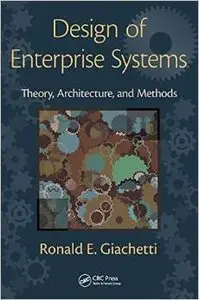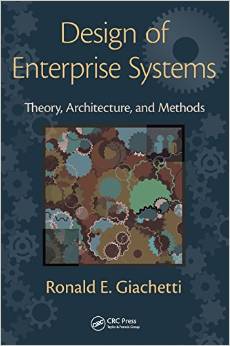Design of Enterprise Systems: Theory, Architecture, and Methods by Ronald E. Giachetti
English | 2010 | ISBN: 1439818231 | 448 pages | PDF | 3,6 MB
English | 2010 | ISBN: 1439818231 | 448 pages | PDF | 3,6 MB
In practice, many different people with backgrounds in many different disciplines contribute to the design of an enterprise. Anyone who makes decisions to change the current enterprise to achieve some preferred structure is considered a designer. What is problematic is how to use the knowledge of separate aspects of the enterprise to achieve a globally optimized enterprise. The synthesis of knowledge from many disciplines to design an enterprise defines the field of enterprise engineering.
Because enterprise systems are exceedingly complex, encompassing many independent domains of study, students must first be taught how to think about enterprise systems. Specifically written for advanced and intermediate courses and modules, Design of Enterprise Systems: Theory, Architecture, and Methods takes a system-theoretical perspective of the enterprise. It describes a systematic approach, called the enterprise design method, to design the enterprise. The design method demonstrates the principles, models, methods, and tools needed to design enterprise systems. The author uses the enterprise system design methodology to organize the chapters to mimic the completion of an actual project. Thus, the book details the enterprise engineering process from initial conceptualization of an enterprise to its final design.
Pedagogical tools available include:
For instructors:
• PowerPoint® slides for each chapter
• Project case studies that can be assigned as long-term projects to accompany the text
• Quiz questions for each chapter
• Business Process Analyzer software available for download
For students:
• Templates, checklists, forms, and models to support enterprise engineering activities
The book fills a need for greater design content in engineering curricula by describing how to design enterprise systems. Inclusion of design is also critical for business students, since they must realize the import their decisions may have on the long-term design of the enterprises they work with. The book’s practical focus and project-based approach coupled with the pedagogical tools gives students the knowledge and skills they need to lead enterprise engineering projects.



